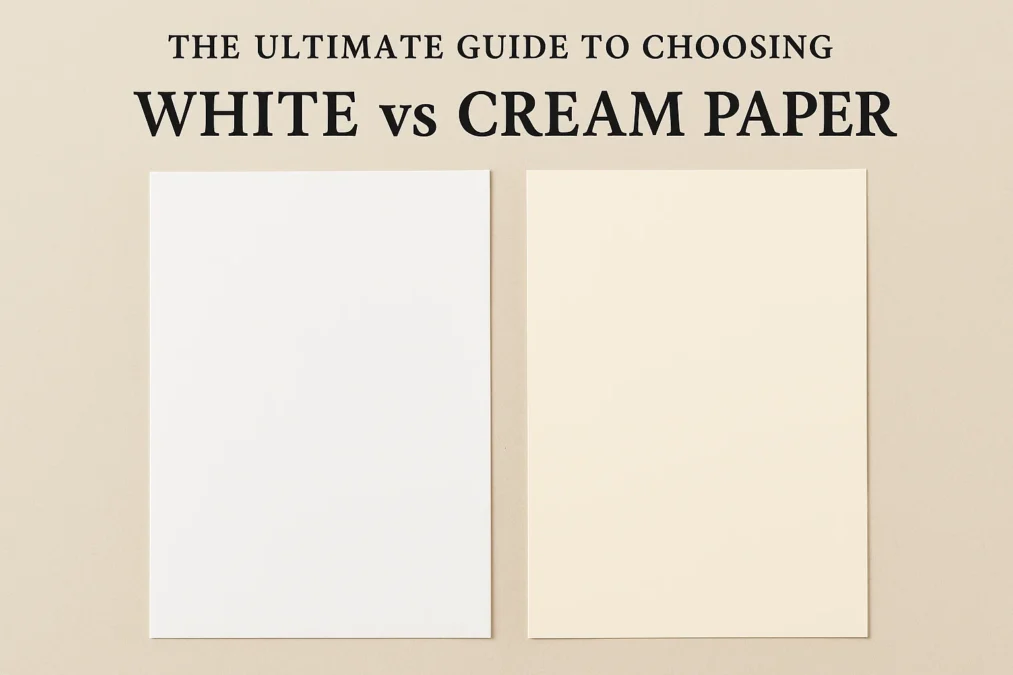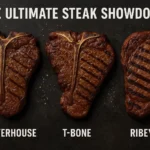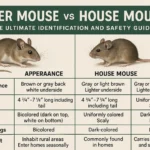In a world increasingly dominated by digital screens, the power of a physical document can feel more potent than ever. A crisp resume, a beautifully printed brochure, or a heartfelt wedding invitation—these tangible items engage our senses in a way pixels simply cannot. They have weight, texture, and a presence. But have you ever stopped to consider the very foundation of that experience? The choice of paper color, often an afterthought, is a silent communicator that speaks volumes before a single word is read. The debate between white vs cream paper is a subtle art, one that balances aesthetics, psychology, readability, and intention.
This isn’t just a matter of picking a shade you like. The selection you make sends a specific message about your brand, your project, or even yourself. White paper often shouts modernity, clarity, and professionalism, while cream paper whispers tradition, elegance, and warmth. Understanding the nuances of this decision can transform your printed materials from merely functional to truly impactful. Whether you’re designing a corporate report, printing a novel, or choosing the perfect stationery for your small business, the color of your paper sets the stage for everything that follows. This comprehensive guide will dive deep into the world of white vs cream paper, exploring everything from the science of readability to the unspoken language of color psychology, equipping you with the knowledge to make an informed and confident choice every time.
The Psychology of Color on Paper
Before we get into the specifics of brightness or acid content, it’s crucial to understand the fundamental psychological impact of color. Our brains are hardwired to associate different colors with different feelings and concepts, and this extends directly to the paper we hold in our hands. The choice between a bright white sheet and a soft cream one is the first cue your reader receives, setting an unconscious tone for the content they are about to consume.
White is universally associated with purity, cleanliness, simplicity, and modernity. It creates a sense of space and order. When you use bright white paper, you are subconsciously signaling clarity, efficiency, and a no-nonsense approach. It feels fresh, new, and direct. This is why you’ll find it dominating hospitals, modern tech companies, and scientific laboratories—environments where sterility and precision are paramount. In the context of reading, white provides the highest possible contrast against black text, which the brain often interprets as sharpness and authority. It’s a bold, confident choice that says, “The information here is clear, accurate, and forward-thinking.”
On the other hand, cream paper evokes a completely different set of emotions. The soft, yellowish, or ivory tones of cream paper are tied to feelings of warmth, tradition, comfort, and authenticity. It reminds us of aged parchment, classic literature, and handwritten letters—things that feel enduring and valuable. Cream suggests a sense of history, elegance, and subtle sophistication. It’s less jarring to the eye than stark white, creating a more relaxed and inviting reading experience. Choosing cream paper can make your document feel more personal, thoughtful, and established. It whispers quality and attention to detail, implying that the content within is worth savoring, not just scanning.
The Science of Readability and Eye Strain
While psychology sets the mood, the physiology of reading is a critical practical concern, especially for long-form text. How a paper color interacts with our eyes can be the difference between a comfortable reading session and a fatiguing one. This is where the scientific debate around white vs cream paper truly comes to life, involving factors like contrast, light reflection, and spectral wavelength.
Bright white paper offers maximum contrast. Black ink on a pure white background creates a stark, definitive line that the eye can easily track. This high contrast is often praised for its ability to enhance sharpness and legibility, particularly for individuals with certain types of visual impairments or in low-light conditions where every bit of contrast helps. It’s why most websites and word processors default to a white background—it’s undeniably clear. However, this strength can also be its weakness. The sheer intensity of reflected light from a bright white page can cause glare, especially under harsh lighting. Over extended periods, this glare can lead to visual fatigue, squinting, and even headaches for some readers, as the eyes constantly work to manage the high level of light stimulation.
This is the primary advantage often attributed to cream paper. Its warmer, off-white tones absorb more light and reflect less of it directly into the eyes. The lower contrast is gentler, reducing glare and creating a softer visual field. Many people find that reading long books, reports, or manuscripts on a cream or ivory paper is significantly more comfortable. The subtle warmth is easier on the eyes, allowing for longer reading sessions with less strain. Furthermore, some studies suggest that the blue light spectrum reflected from bright white surfaces can be more stimulating and tiring, whereas the warmer, yellow-based light reflected from cream paper is less so. For this reason, many e-readers now offer a “warm light” or “sepia” mode specifically to mimic the eye-comfort benefits of reading on cream paper.
Professional and Business Applications
In the world of business, every detail contributes to your brand’s perception. The paper you choose for your resumes, letterheads, business cards, and corporate reports is a tangible extension of your professional identity. The decision between white vs cream paper in this context is a strategic one, heavily influenced by industry norms and the specific message you wish to convey.
For most mainstream corporate, tech, and financial environments, bright white paper is the undisputed standard. It communicates professionalism, modernity, and efficiency. A resume printed on high-quality, bright white paper feels crisp, clean, and direct. It suggests that the candidate is up-to-date, organized, and serious. Corporate reports on white paper imply accuracy, transparency, and a focus on data-driven results. In fast-paced industries where clarity and immediacy are valued, white is the safe and often expected choice. It doesn’t distract from the content; instead, it provides a neutral, high-impact backdrop that makes text and graphics pop with precision. Deviating from this norm without a clear reason can sometimes be perceived as an attempt to distract from a lack of substance.
Conversely, cream paper is the hallmark of professions that value tradition, luxury, and a personal touch. Law firms, antique dealers, high-end wedding planners, boutique consultants, and academic institutions often lean towards cream or ivory stationery. It conveys a sense of established trust, wisdom, and elegance. A resume for a role in one of these fields, printed on premium cream paper, can signal that you understand and embody the culture of the industry. It suggests you are thoughtful, detail-oriented, and value quality over fleeting trends. For businesses that sell a luxury experience or an artisanal product, cream paper can make marketing materials feel more exclusive and refined. It tells the client that you care about the entire experience, down to the very paper your proposal is printed on.
Creative and Personal Projects
When professional constraints are loosened, and personal expression takes center stage, the choice between white vs cream paper becomes a powerful tool for setting a mood and creating an emotional connection. From wedding invitations to personal stationery and artistic portfolios, the paper color is an integral part of the creative narrative.
For projects that demand a modern, minimalist, or bold aesthetic, white paper is the ideal canvas. Contemporary art portfolios, photography books, and architectural proposals often use bright white paper because it makes colors appear more vibrant and true-to-life. The neutral background allows the artwork itself to dominate without any color cast from the paper. A graphic designer’s business card on stark white stock can feel sleek and innovative. For personal projects, white paper can convey a sense of clean-lined simplicity and clarity. It’s a fantastic choice for announcements, flyers, or any project where you want the message and imagery to feel fresh, direct, and uncluttered by nostalgia.
For arguably the majority of personal and celebratory projects, cream paper is the traditional and beloved choice. It is almost synonymous with wedding invitations for a reason. The soft, warm hue of cream paper evokes romance, timelessness, and formality. It feels special and ceremonial, setting a tone of elegance and warmth for the event itself. Beyond weddings, cream paper is perfect for personal stationery, thank-you notes, and holiday cards because it feels inherently more personal and heartfelt than white. It carries a tactile, human quality that resonates with emotional content. Authors and publishers of historical fiction or literary memoirs often choose cream paper for book interiors because it helps to create a certain atmosphere and feeling of authenticity that aligns with the story.
The Technical and Physical Properties
The difference between white and cream paper isn’t just skin deep; it often extends to the very composition of the paper itself. Understanding the technical aspects—from brightness measurements to acid content—can provide further insight into the longevity and appropriate use of each type.
Bright white paper achieves its signature look through a process called bleaching. Wood pulp is treated with chemicals to remove lignin, a natural polymer that causes paper to yellow and become brittle over time when exposed to light and air. Modern bright white papers are also often treated with optical brightening agents (OBAs). These are fluorescent chemicals that absorb ultraviolet light and re-emit it as a visible blue light, making the paper appear even brighter and whiter to the human eye. This process results in a paper with a very high “brightness” rating, typically measured on a scale of 1 to 100. Premium bright white copy paper might have a brightness of 96 or higher. This bleaching and brightening process generally creates a very neutral, pH-balanced paper that is inherently acid-free, contributing to its archival qualities and resistance to yellowing further.
The distinctive hue of cream paper can come from two primary sources. The first is a less intensive bleaching process, which leaves more of the paper’s natural lignin or uses alternative, milder bleaching agents that result in a warm, off-white tone. The second, and more common for high-quality stationery, is the use of cotton fiber. Cotton is naturally lignin-free and does not require harsh bleaching to achieve a white state. However, premium cream paper is often deliberately made to retain its natural, slightly off-white color, or it is tinted with subtle pigments. Many of these high-end cotton papers are naturally acid-free and archival without the need for OBAs. This makes them a superb choice for documents meant to last for generations, such as diplomas, legal certificates, and fine art prints. The absence of OBAs also means that cream paper tends to look more consistent under different lighting conditions, whereas white paper with OBAs can sometimes look a little too blue or “glowy” under certain lights.
To vs Too: The Ultimate Guide to Mastering This Common Grammar Dilemma
Environmental Considerations
In an eco-conscious world, the environmental impact of our choices is increasingly important. The production processes for white vs cream paper can have different ecological footprints, which may influence the decision for individuals and businesses committed to sustainability.
The process of creating bright white paper is generally more chemically intensive. The bleaching required to achieve that pristine whiteness has historically involved chlorine-based compounds, which can produce harmful dioxins as byproducts. While the industry has largely moved towards Elemental Chlorine Free (ECF) and Totally Chlorine Free (TCF) processes, which are significantly cleaner, it still remains a more resource-heavy process than producing unbleached paper. Furthermore, the optical brightening agents (OBAs) used in many white papers are synthetic chemicals that can be persistent in the environment. For those looking to minimize chemical use, a bright white paper with high OBAs may not be the first choice.
Cream paper, particularly the varieties that are unbleached or lightly bleached, often has a smaller environmental footprint. The production process typically uses fewer harsh chemicals. Many recycled-content papers are also naturally off-white or cream in color because it is difficult to achieve a pure white when using post-consumer waste. Therefore, choosing a cream-colored recycled paper can be a double win for the environment. Additionally, the trend towards “natural” and “tree-free” papers (like those made from bamboo, hemp, or cotton) often results in a cream or tan color, as these processes forego heavy bleaching. It’s important to note that this is not a hard and fast rule—you can find environmentally destructive cream papers and highly sustainable bright white papers. The key is to look beyond color and check for certifications like FSC (Forest Stewardship Council), SFI (Sustainable Forestry Initiative), and specific claims about recycled content and chlorine-free processing.
Cost and Availability
Practicality often dictates our choices, and the factors of cost and availability are significant when deciding between white vs cream paper for everyday or large-scale use.
Bright white paper is the default for the global paper industry. It is mass-produced in enormous quantities for everything from office copy paper to newspaper. This economies-of-scale effect makes it the most widely available and generally the most affordable option. You can walk into any office supply store in the world and find a vast selection of bright white paper in various weights and qualities at competitive prices. For large print runs, like books or manuals, using standard white paper will almost always be less expensive than specifying a custom cream shade. Its ubiquity makes it the most accessible and cost-effective choice for most general purposes.
Cream paper, while not rare, is more of a specialty item. It is not produced in the same colossal volumes as bright white paper, which often means a slightly higher price point. You will typically find a more limited selection of cream papers at a standard office supply store, with the best and most varied options available at specialty paper stores or through commercial printers. Because it is a deliberate choice rather than a default, it often comes paired with higher-quality features—like cotton content, textured finishes, and archival properties—which also contribute to its premium cost. For a small business ordering custom stationery or an individual planning a wedding, the cost difference may be negligible and well worth the desired aesthetic. However, for a large corporation printing millions of pages of internal documents per year, the cost differential would be substantial.
Making the Final Choice: A Summary of Considerations
After exploring the many facets of the white vs cream paper debate, how do you make the right decision for your specific need? There is no one-size-fits-all answer, but by weighing the following key considerations against your project’s goals, you can arrive at a confident conclusion.
First, consider your audience and industry. Are you in a modern tech startup or a century-old law firm? The expectations of your readers matter. Second, think about the content’s purpose and desired mood. Is it a sharp, data-driven annual report that needs to feel immediate and authoritative? Or is it a novel meant to be savored, or an invitation to a warm, intimate event? Third, never underestimate the importance of readability, especially for long texts. If your primary concern is reducing eye strain for your readers, cream paper has a distinct advantage. Fourth, reflect on your brand’s personality. Are you bold, clean, and innovative (leaning towards white) or are you established, elegant, and authentic (leaning towards cream)? Finally, balance all of this with practical constraints like budget, availability, and any environmental priorities you may hold.
To help visualize this decision-making process, the following table provides a clear, at-a-glance comparison of the core attributes of white vs cream paper.
| Feature | White Paper | Cream Paper |
|---|---|---|
| Psychological Impact | Modern, clean, efficient, professional | Traditional, elegant, warm, authentic |
| Readability | High contrast, can cause glare over long periods | Lower contrast, gentler on the eyes, reduces strain |
| Best For | Corporate reports, resumes, tech, medical, photography | Wedding invites, literary books, luxury brands, law firms |
| Typical Composition | Heavily bleached wood pulp, often with OBAs | Lightly bleached pulp or cotton, often OBA-free |
| Archival Quality | Good (if acid-free) | Excellent (many are naturally acid-free) |
| Environmental Impact | Often more chemically intensive processing | Often less processed, many recycled options are cream |
| Cost & Availability | Highly available, generally lower cost | Specialty item, often higher cost |
Conclusion
The choice between white and cream paper is a beautiful reminder that details matter. It is a decision that operates on multiple levels—psychological, physiological, aesthetic, and practical. Bright white paper stands as a beacon of modernity and clarity, perfect for making a sharp, professional impression and presenting vibrant visuals with maximum impact. Soft cream paper offers a timeless embrace of warmth and elegance, ideal for creating a comfortable reading experience and conveying a sense of enduring quality and sophistication. There is no outright winner in the debate of white vs cream paper; there is only the right paper for the right purpose. By understanding the silent language of paper color, you empower yourself to make choices that enhance your message, respect your audience, and elevate your printed materials from simple conveyors of information to thoughtful, impactful experiences.
Frequently Asked Questions (FAQ)
What is the main difference between white and cream paper?
The most apparent difference is, of course, the color. White paper is bright and neutral, often achieved through bleaching and optical brighteners, while cream paper has a warm, yellowish, or ivory tone, which can be natural or lightly tinted. Beyond aesthetics, this difference drives all other distinctions. White paper typically offers higher contrast for text, which can aid sharpness but may contribute to eye strain. Cream paper provides lower contrast, which is generally easier on the eyes for extended reading. The feel and connotation are also different; white feels modern and crisp, whereas cream feels classic and elegant.
Is cream paper more professional than white paper?
Professionalism is context-dependent. In most mainstream corporate, tech, and medical fields, bright white paper is considered the standard and most professional choice because it communicates clarity and efficiency. However, in industries like law, academia, luxury goods, and certain consultancies, high-quality cream paper is often viewed as more professional because it conveys tradition, stability, and a non-mass-produced quality. The key is to understand the norms and expectations of your specific industry and audience.
Does cream paper look cheaper than white paper?
Quite the opposite. When chosen appropriately, high-quality cream paper is almost universally perceived as more premium and expensive than standard bright white copy paper. This is because it is often associated with cotton content, textured finishes, and specialty printing like wedding invitations and fine stationery. A flimsy, low-quality cream paper could look cheap, but a substantial, textured cream paper consistently signals elegance and quality, whereas bright white paper is the common, default option.
Which paper color is better for resumes?
For the vast majority of industries and job applications, bright white paper is the recommended and safest choice. It looks clean, modern, and professional, and it ensures maximum readability for recruiters who may be sifting through hundreds of applications. It also photocopies and scans perfectly. Using cream paper for a resume can be a strategic risk; it might stand out positively in a creative field or a very traditional company, but it could also be perceived as trying too hard or being out of touch in a standard corporate environment. Unless you have a specific reason to believe cream will be appreciated, stick with high-quality white.
For a book, which paper is easier on the eyes?
For long-form reading, such as novels or non-fiction books, many readers and experts find that cream paper is significantly easier on the eyes. The softer, warm-toned background creates less glare and reduces the contrast shock that can lead to eye fatigue during extended reading sessions. This is why many publishers of literary fiction and trade paperbacks intentionally choose off-white or cream paper for the interior pages. The high contrast of black text on bright white paper can be excellent for short bursts of reading or reference materials, but for a multi-hour reading session, cream is generally the more comfortable option.
Quotes:
“Paper is the silent messenger of your words. Its color, weight, and texture speak before a single sentence is read.” — Anonymous Design Philosopher
“The choice between white and cream is the choice between a shout and a whisper. One demands attention, the other invites contemplation.” — A Veteran Book Designer
“In the digital age, the tactile quality of paper is a luxury. Choosing cream over white is like selecting a fine linen over a polyester blend—it’s an indulgence in sensory experience.” — A Stationery Shop Owner



